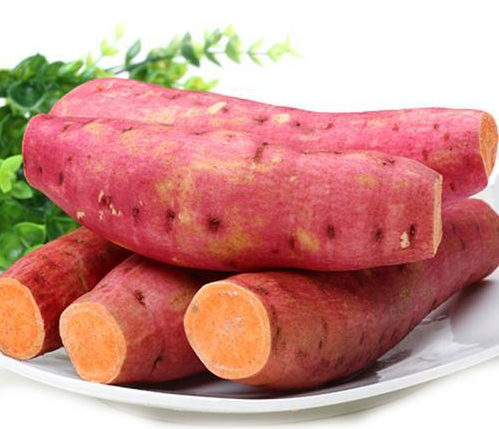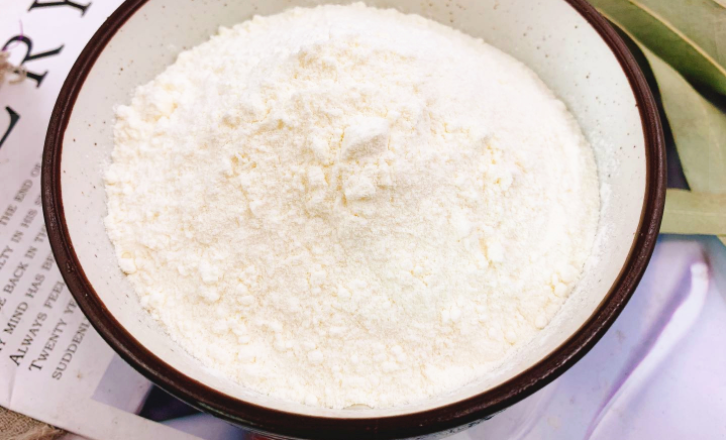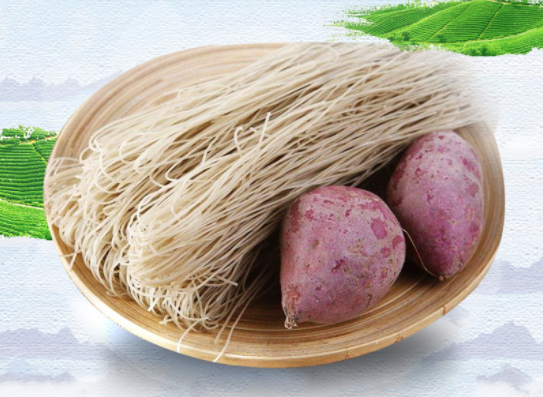Sweet potatoes can be divided into fresh sweet potatoes and dried sweet potatoes. The production of starch from fresh sweet potatoes is generally manual production in rural areas, while sweet potato starch factories mostly use dried sweet potatoes as starch raw materials, so they belong to industrial production.

1. Fresh sweet potato produces starch
The process flow is as follows: raw material selection-washing-crushing-grinding and filtering-pulping-skimming and sitting tank-skimming-powder-drying.
Its production process is as follows:
(1) Raw material selection: Due to different sweet potato varieties, their quality and starch content are also different. Even the same variety, in different producing areas, its quality is also very different. It is necessary to select a variety of processed starch, which requires high starch content. Diseased sweet potatoes are not only unsuitable for starch processing, but also infect other potato pieces during storage, which are prone to rot and cause losses. Therefore, diseased potatoes must be removed. .
(2) Washing with water: Pour the fresh potatoes into the jar and add clean water, manually wash them, take them out after washing, and drain the remaining water.
(3) Crushing: Fresh potatoes after draining with a crusher
Break into pieces, the size of the pieces is less than 2 cm, in order to facilitate the grinding.
(4) Grinding and filtering: This is the main link in the production of sweet potato starch, which affects the quality of the product and the yield of starch. Send the fresh potato pieces to a stone mill or emery mill and add water to grind them into a potato paste. The ratio of the weight of the fresh potato to the amount of water added is 1:3-3.5. Pour the potato paste into a 60-mesh sieve for filtering.
(5) Sizing: Put the filtered starch milk in a large tank, and then add physalis and water in proportion to adjust the acidity and concentration of the starch milk. The acidity and concentration of starch milk are closely related to the precipitation of starch and protein. If the starch lactic acid is too large, starch and protein will precipitate at the same time, making the separation of starch unclear. If the acidity is too small, the protein and starch will not precipitate well, and they will be emulsions and cannot be separated. According to production experience, the optimal pH value of physalis is 3.6-4.0. The concentration of starch milk in the big tank is 3.5-4.0 Baume, the amount of physalis added is 2% of the starch milk, and the ph value of the starch milk after adding physalis is 5.6. If the temperature is high and the fermentation is fast, the amount of physalis can be reduced accordingly.
(6) Skimmer and sit on the vat: After mixing the slurry, let it stand for about 20-30 minutes to complete the precipitation, and then the vat can be skimmed. Take out the mixture of clear swill water, protein, fiber and a small amount of starch in the upper layer, and starch in the bottom layer. Add water to the bottom starch after skimming and mix it into starch milk to re-precipitate the starch. In the precipitation process, it plays the role of physalis fermentation, which is called sitting tank. The temperature and time should be controlled when sitting in the cylinder. The sitting temperature is about 20 degrees Celsius. It must be kept warm in cold weather or hot water can be used when adding water to mix. Fermentation in a vat must be fully developed and agitated properly during the fermentation process to promote the completion of the fermentation. Generally speaking, the sitting time is 24 hours, and the hot weather can shorten some time accordingly. After the fermentation is completed, the starch precipitates.
(7) Slurry skimming and filtration: The physalis produced by sitting in a cylinder is called Erhe syrup, which is the physalis mainly used in the physalis method. Normally fermented physalis has a clear fragrance, and the color of the physalis is as white as milk. If the physalis is under-fermented or over-fermented, the color and aroma will be poor, and the effect will not be effective when used for pulping. Skimming is to skim the upper layer of physalis for pulping. The starch after skimming is sieved with a fine sieve with an opening of 120. The sieve is fine residue, which can be used as feed. The under sieve is starch, which is transferred to a small tank. After the starch is transferred to the small tank, add water to rinse the starch. It takes about 24 hours to prevent fermentation.
(8) Powdering: After starch is deposited in a small tank, the upper liquid is a small slurry, which can be used in conjunction with physalis or as water for grinding. After skimming the small pulp, a layer of gray oil powder remains on the surface of the starch, which is impure starch containing protein. The oil powder can be washed away from the surface of the starch with water. The eluate can be used as the nutrient material for cultivating physalis. The bottom starch is taken out with a shovel. There may be fine sand on the bottom of the starch, which should be brushed off.
(9) Drying: After the above process, wet starch is obtained. In order to facilitate storage and transportation, it must be dried. Generally, it is dried in the sun or sent to a drying room for drying.

2. Dried sweet potatoes produce starch
The process flow is as follows: raw material pretreatment-soaking-crushing and grinding-sieving-launder separation-alkali, acid treatment and cleaning-centrifugal separation and drying.
Its production process is as follows:
(1) Raw material pretreatment: After fresh sweet potatoes are harvested, they are usually cut into slices or filaments, and dried in the sun or fire to make dried sweet potatoes. This kind of dried sweet potato is inevitably mixed with various impurities during processing and transportation, so it must be pre-treated. There are two types of pretreatment: dry and wet. The dry method uses screening equipment and winnowing equipment. Wet processing is with washing machine or washing tub.
(2) Soaking: In order to increase the starch yield, soak in alkaline water can be used. Generally, saturated lime milk or 1% dilute lye is added to the soaking water to make the pH value 10-11. The soaking time is about 12 hours, and the temperature is controlled at 35-40 degrees Celsius. After soaking, the water content of the sweet potato chips is 60%.
(3) Crushing and grinding: The soaked sweet potato chips enter the hammer mill with water to be crushed, reach a certain fineness, and pass through the sieve to be discharged out of the machine. The temperature of dried potato rises instantaneously during the crushing process, and part of the starch is easy to be gelatinized by heat, which affects the separation of starch and potato residue when sieving; it is not easy to precipitate during separation in the launder, resulting in an increase in secondary powder and affecting the production of good powder. Out rate. In order to prevent the starch from being easily gelatinized by one crushing treatment, a two-stage crushing process and sieving process can be adopted. That is, the dried potato is crushed in the first pass, sieved, and then crushed in the second pass, and then sieved. In the crushing process, in order to reduce the instantaneous temperature rise, the slurry concentration is adjusted according to the different crushing particle sizes in each pass, the first pass is 3-3.5 Baume degrees, and the second pass is 2-2.5 Baume degrees. At the same time, a homogenizer is used to control the input of dried sweet potatoes, balance the slurry, avoid the overload of the crusher, and also facilitate the separation of the launder.
(4) Sifting: The sweet potato paste obtained by pulverizing dried sweet potatoes is also called feed liquid. It must be sieved to separate the slag, that is, fiber. Normally, a flat-shaking sieve is used. The material liquid enters the sieve surface, and it is required to be evenly sieved. The water is continuously poured. The starch enters the slurry storage tank with the water through the sieve holes, and the slag remains on the sieve surface and is discharged from the tail. The screen cloth is 120 mesh nylon cloth. During the sieving process, because the material liquid contains pectin and other viscous substances that are retained on the screen surface, which affects the separation effect of the sieve, the sieve cloth should be washed frequently to ensure that the sieve holes are unblocked.
(5) Launder separation: The starch that has been finely sieved is generally used to separate proteins in launder. Its advantages are that it is easy to construct, uses less steel, saves kinetic energy, and is more stable in operation. The disadvantages are large area, intermittent operation, low separation efficiency, large starch loss, and poor working conditions.
(6) Alkali and acid treatment and cleaning: In order to further improve the purity of starch, in the process of washing the starch, it must be treated with alkali and acid. Starch alkali, acid treatment and cleaning are all carried out in a cement tank with a mixing device. The size of the cement tank is determined according to the production capacity, and the rotation speed of the agitator is about 60 rpm. The starch milk from the launder is first treated with alkali to remove impurities such as alkali-soluble protein and pectin in the starch. The method of alkali treatment is to slowly add 1 Baume lye to the starch milk, control the pH value to 12, and start the agitator at the same time to mix well. After half an hour, stop the stirring and wait until the starch is completely precipitated. , Drain the upper layer of waste liquid, and inject clean water twice to make it close to neutral. In the alkali treatment process, sodium chlorate solution with a concentration of 35 Baume degrees can also be added, and the amount is not more than 0.4% of the weight of the dry starch. Because sodium hypochlorite is a strong oxidant, it has strong bleaching and sterilization effects, so that it can achieve the purpose of whitening and antiseptic. The starch after alkali and sodium hypochlorite treatment and washing is then acid treated. Its purpose is to dissolve acid-soluble proteins, neutralize the residual alkalinity during alkali treatment, and inhibit the activity and reproduction of microorganisms. Industrial hydrochloric acid can be used for acid treatment, and it must be added slowly and fully stirred during operation to control the ph value of the starch milk to about 3. Prevent local overacidity and cause starch loss. The acid-added starch milk is treated with alkali in the same operation method to precipitate starch, remove the upper layer of waste liquid, add water to wash, and finally make the starch slightly acidic with a pH of about 6 to facilitate the storage and transportation of the starch.
(7) Centrifugal separation and drying: The starch obtained after washing has a high moisture content, and it must be dehydrated by a centrifugal separator to reduce the moisture content of the starch to below 45%. Some factories directly leave the factory or use it as wet starch. In order to facilitate storage and transportation, the dehydrated wet starch needs to be dried to reach the required starch water content. Usually the moisture content of sweet potato starch is 12%-13%. Airflow drying can be used for starch drying because it has the advantages of fast drying speed, high efficiency, high equipment production capacity and low equipment cost.

3. Sweet potato vermicelli processing
The process flow of sweet potato vermicelli processing: starch-beating-powder adjustment-powder leakage-cooling, bleaching-freezing-drying-finished product.
(1) Beating: first make a small amount of starch into a thin paste with hot water, then use boiling water to wash the adjusted thin paste, and continuously stir in one direction until the paste becomes thick, transparent and uniform. Powdered Gorgon. To make 100 kilograms of dried sweet potato vermicelli, 300 grams of alum, 35 kilograms of boiling water, and about 3 kilograms of dry starch are needed for beating.
(2) Powder adjustment: first add 0.5% alum to the powder, mix thoroughly, then mix the wet starch and powder, stir and knead until there is no lumps, sticky hands, and a soft powder that can be drawn. You can try it before leaking fans to see if the fans are suitable. If the fans missed are not thick, thin, and continuous, it is suitable. If the strips are too fast, the strips will break, which means that the slurry is too thin, so you should mix with dry starch and knead to make the noodles moderately tough; the strips are difficult to follow or the speed is too slow, the thickness is uneven, and the surface slurry is too dry, so add more Some wet starch. It is advisable to adjust the powder at a time. The temperature of the dough is preferably 30-42 degrees Celsius.
(3) Leaking powder: Put the kneaded dough in a drain scoop with small holes, the hole diameter of the drain scoop is 7.5 mm, and the fineness of the vermicelli is 0.6-0.8 mm. Squeeze the dough in the scoop with your hands, and pass through the small holes, and the dough will leak into vermicelli. Put a boiling pot of water 55-65 cm from the bottom of the scoop. The vermicelli will fall into the boiling pot and be solidified and cooked when heated. The water temperature should be maintained at 97-98 degrees Celsius, boiling water will destroy the vermicelli. When leaking powder, use bamboo chopsticks to stir in the pot to prevent the vermicelli from sticking to the bottom of the pot. After the raw vermicelli leaks into the pot, you must control the time and the heat. If the cooking time is too short, the vermicelli will not be cooked; if the cooking time is too long, it is easy to swell and make the vermicelli crisp.
(4) Cooling and bleaching: After the vermicelli falls into the boiling water pot; when it is about to float, use a small bamboo pole to start it and pull it into the cold water tank to cool it, the purpose is to increase the flexibility of the vermicelli. After cooling, wrap the bamboo sticks into bundles, put them in physalis soak for 3-4 minutes, remove them to cool thoroughly, rinse them with water, and rub them apart to stick the vermicelli with each other. The purpose of physalis soaking is to bleach the pigment on the vermicelli, remove the stickiness, and increase the smoothness. In order to make the vermicelli white, it can also be bleached with sulfur dioxide fumigation. Sulfur dioxide can be made by igniting sulfur blocks, and fumigation can be carried out in a closed room.
(5) Freezing: Sweet potato vermicelli has strong adhesion and poor toughness, so it needs to be frozen. The freezing temperature is minus 8 degrees Celsius to minus 10 degrees Celsius, until all freezes. Then, put the vermicelli in water at 30-40 degrees Celsius to melt it, rub it with your hands, spread all the vermicelli into monofilaments, and put it on a rack to dry.
(6) Drying: The drying rack should be placed in an open drying field. When drying, the fans should be gently shaken to make them evenly dry. After drying, they can be packed into bags. The finished sweet potato vermicelli should have a pure white color, no visible impurities, crisp silk, no more than 2% by weight, no peculiar smell, good toughness after cooking and processing, not easy to break, and a unique flavor of sweet potato vermicelli.
Copyright © Henan Zhongxing Grain And Oil Machinery Co.,Ltd. All Rights Reserved. Powered by MetInfo